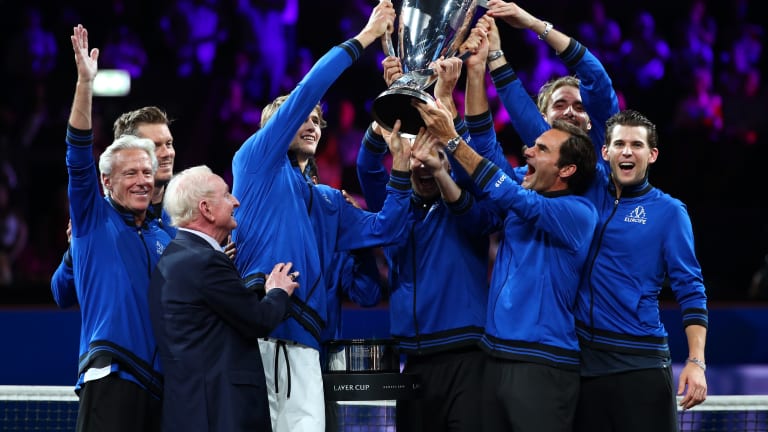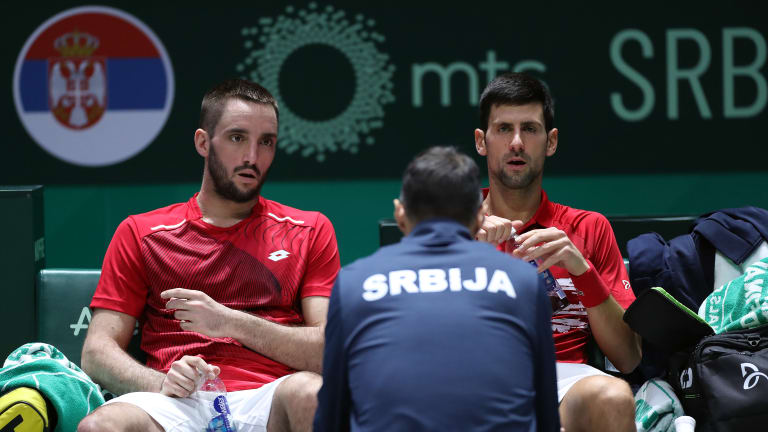“Honey I Shrunk the Davis Cup”: Has new format solved the old issues?
By Nov 22, 2019Social
Reaction to Roger Federer's Hall of Fame induction: "You're the most important sportsman of all time"
By Nov 20, 2025Facts & Stats
Roger Federer is headed to the International Tennis Hall of Fame: 26 stats for his 2026 induction
By Nov 19, 2025International Tennis Hall Of Fame
Mary Carillo joins Roger Federer with election into International Tennis Hall of Fame
By Nov 19, 2025Stat of the Day
Jannik Sinner has now reached the final at all four Grand Slams and the ATP Finals this year
By Nov 15, 2025The Business of Tennis
Carlos Alcaraz, Jannik Sinner take their rivalry—and star power—on the road for 2026 “Super Match”
By Oct 24, 2025ATP Shanghai, China
Roger Federer thrills tennis world with Shanghai Masters Celebrity doubles return
By Oct 10, 2025Opinion
Roger Federer kicks off court speed debate: are fast courts going extinct?
By Oct 09, 2025International Tennis Hall Of Fame
Roger Federer, Juan Martin del Potro lead 2026 nominees for the International Tennis Hall of Fame
By Oct 01, 2025Social
“With that swing…” Roger Federer teases Rafael Nadal in Ryder Cup video message
By Sep 27, 2025“Honey I Shrunk the Davis Cup”: Has new format solved the old issues?
One thing is obvious: the new Cup, the brainchild of Spanish soccer star Gerard Piqué, is having growing pains.
Published Nov 22, 2019
Advertising

“Honey I Shrunk the Davis Cup”: Has new format solved the old issues?
© Getty Images
Advertising

“Honey I Shrunk the Davis Cup”: Has new format solved the old issues?
© Getty Images
Advertising

“Honey I Shrunk the Davis Cup”: Has new format solved the old issues?
© Getty Images for Laver Cup
Advertising

“Honey I Shrunk the Davis Cup”: Has new format solved the old issues?
© Getty Images